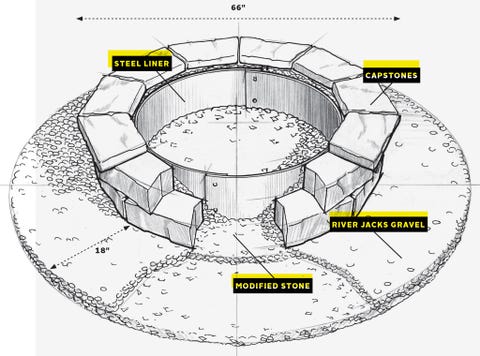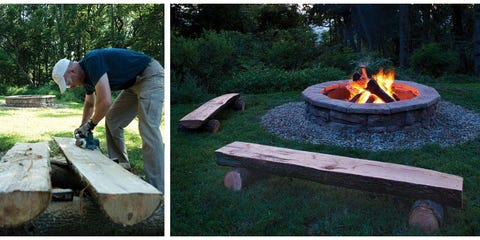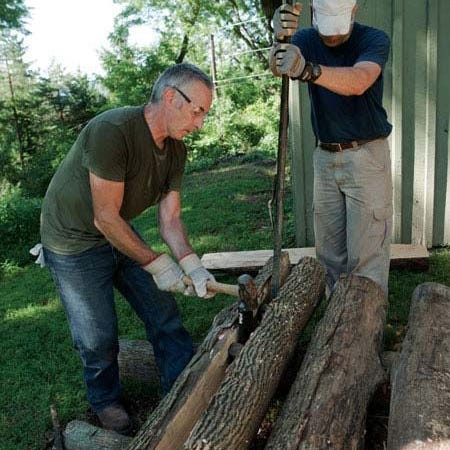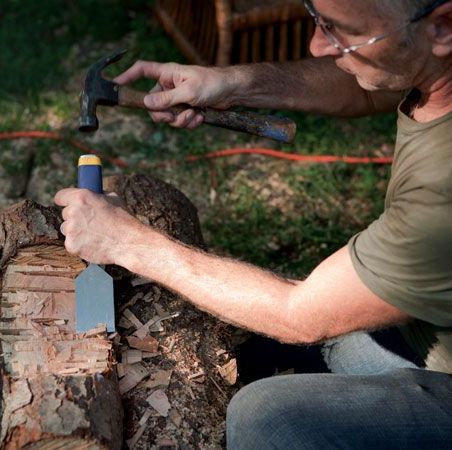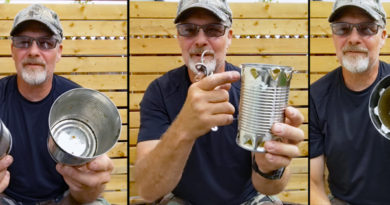DIY Fire Pit | How to Build a Fire Pit – Popular Mechanics
POP Projects is a growing collection of new and classic projects from more than a century of Popular Mechanics. Master skills, get tool recommendations, and, most importantly, build something of your very own.
We knew it was time to build a proper DIY fire pit after seeing the ugly charred circle our backyard fires would make. We also worried that a wind-blown ember could torch the nearby woods, unless the fire was property contained.
I considered building a traditional brick fire pit on a concrete footing, but that’s no small undertaking or expense. The first step would be to dig a 30-inch-deep footing trench down through rocky soil. Then I’d have to get the concrete into the trench. Even if I opted to get the material delivered, it’s not easy lugging it by wheelbarrow. Mixing it by hand also seemed like a backbreaker. So I abandoned the idea of traditional masonry. Investigating chimineas and steel fire rings at a nearby home center, my wife and I discovered the Fossil Stone Fire Pit from Natural Concrete Products.
Much to my surprise, a buddy and I constructed the pit in 4 hours. When night fell, I kindled a big fire. Friends gathered, and I relaxed with a cold beer. The pit looked great and safely contained the fire without a burnt ring of grass the next day.
Picking the Right Spot
Here’s what not to do: Build the pit under low-hanging limbs or power lines. Also, avoid putting it over or near a septic tank, leaching field, well head, or property line. Local laws will almost certainly require you to position a structure of this type a given distance from your neighbor’s plot, not to mention your own house. Check the codes at the town hall or the fire department.
After my buddy—Roy Berendsohn, Popular Mechanics‘ senior home editor—and I had located the ideal spot in my yard, we drove a stake at the approximate center of the pit, looped a mason’s line around the stake, and then tied the line around a can of white landscape spray paint, with which I created a 102-inch-diameter circle. This is large enough to accommodate the pit, whose outside diameter is 66 inches, and a surrounding 18-inch band of River Jacks gravel.
To create a base for the pit and gravel, we dug a hole 4 inches deep bordered by the painted circle and dumped in enough crushed stone to fill a few wheelbarrows. (I used 2A Modified, a common road-building material in my area; check for something similar at your local stone yard.) After raking the stone to a depth of about 2 inches, we compacted it with a hand tamper.
For aesthetic reasons and to ensure the fire-pit blocks align properly, it’s important to build the pit’s walls on a level surface. So we marked a 68-inch-diameter circle (a couple inches wider than the outer wall of the pit) on the compacted stone, then used a 4-foot mason’s level to check the surface. We weren’t as fussy about leveling the rest of the stone, since it would be covered just by the gravel.
Now…Let’s Make Some Seats
I wanted to install seating near the fire pit and thought a couple of rustic log benches would fit the bill. Since I heat my home with firewood, I always have a few logs on hand: The straightest of these became the seats.
One Last Thing: Building the Fire
To make a teepee fire, stack kindling, then stand wood over it. The vertical wood forms a chimney, and the draft through it produces a quick, hot fire that looks pretty and makes a small pile of embers.
The log cabin, or ladder, burns slowly and is better for cooking.
💡The teepee’s embers can start a log cabin fire.



